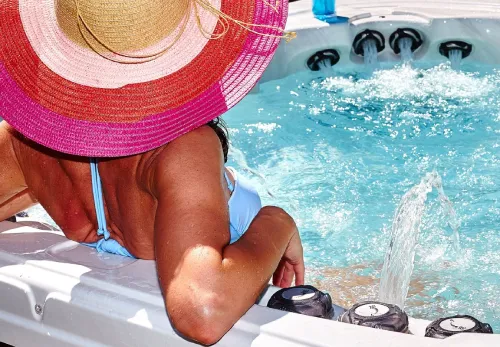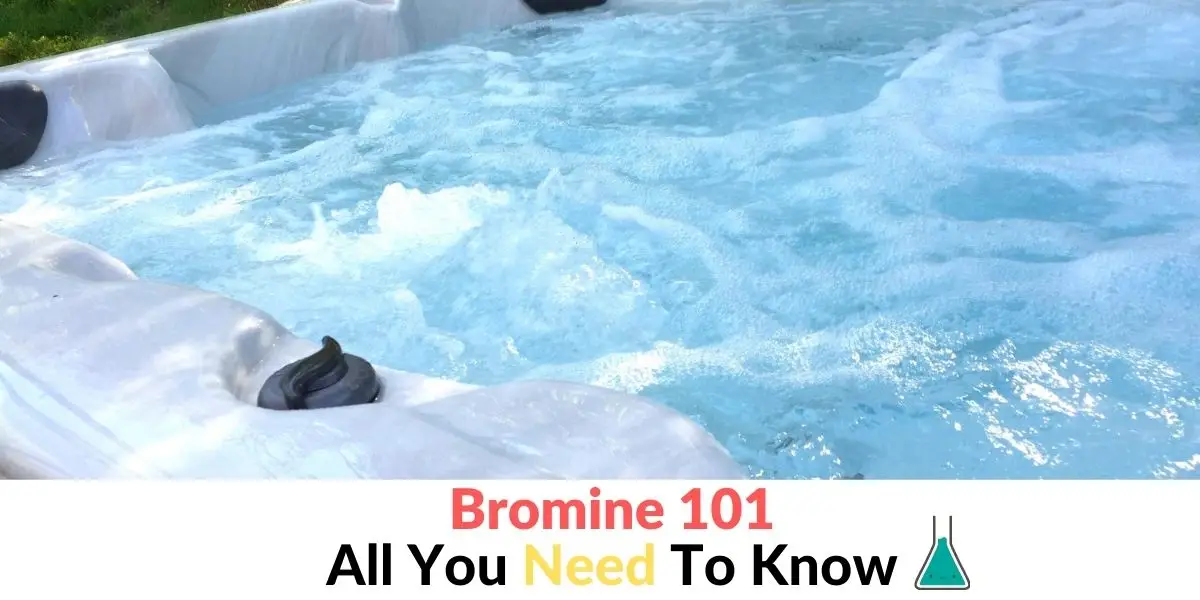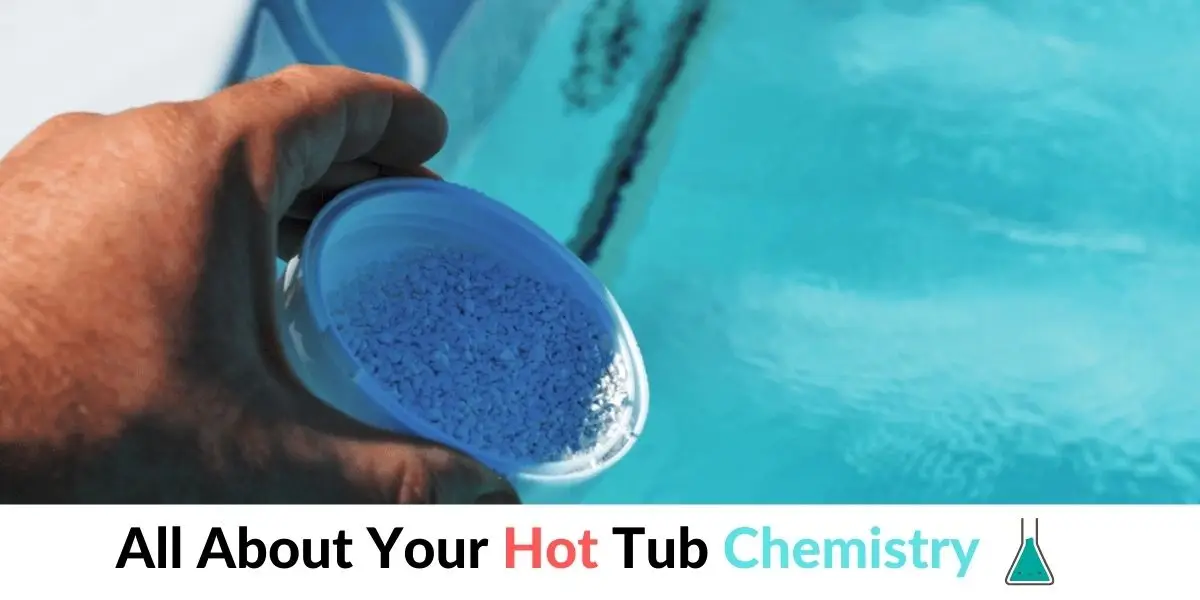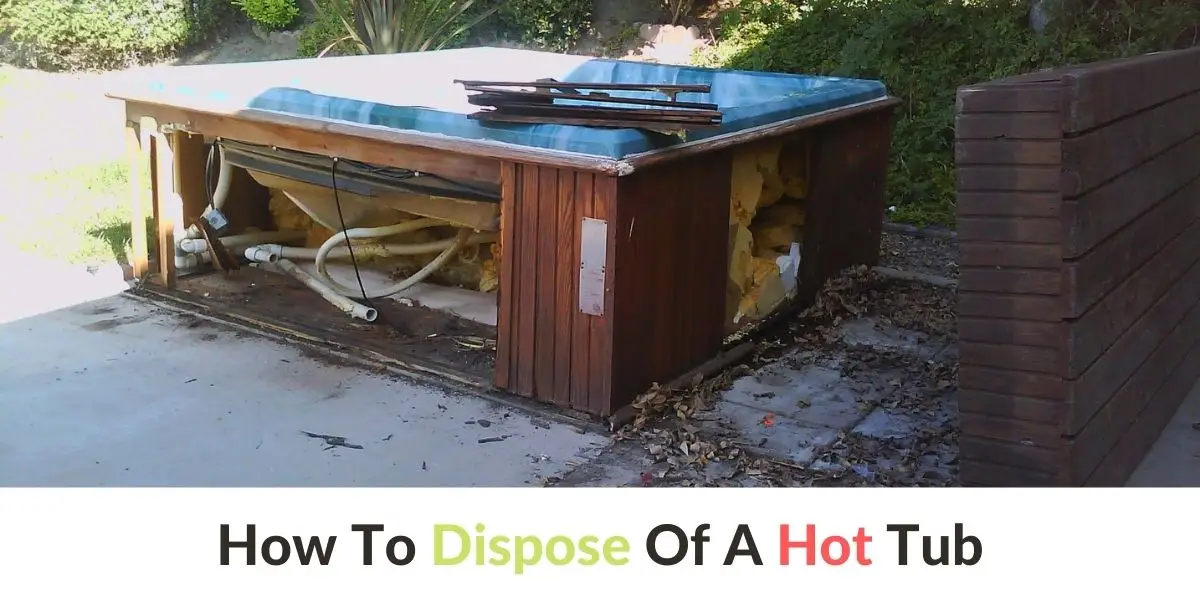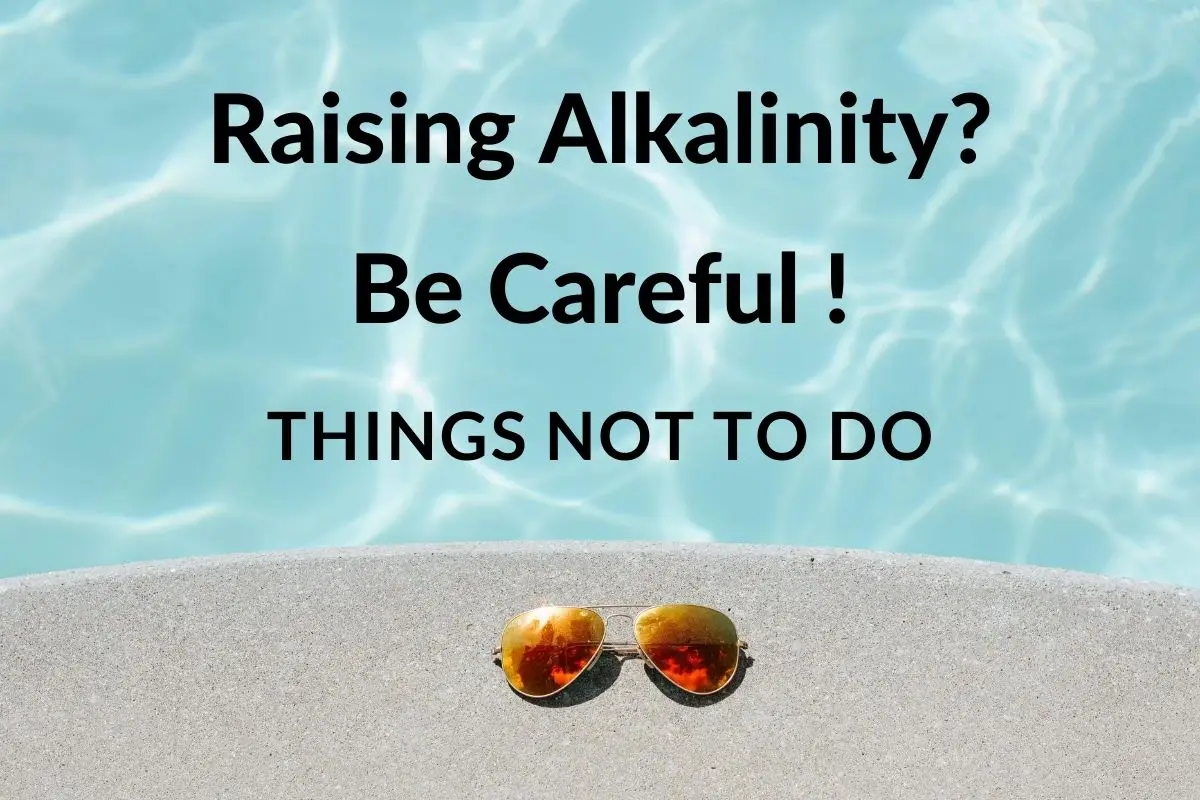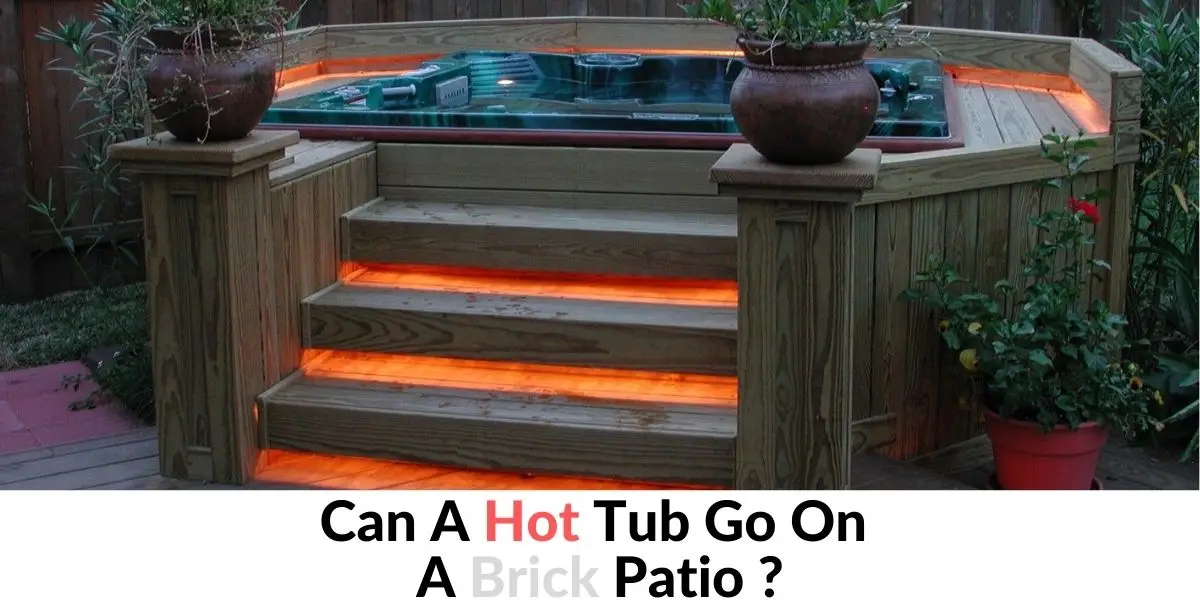How Long will a Hot Tub Be Safe Without Adding Chemicals?
Given the proper care, regular use of sanitizer and monitoring the pH value, hot tub water can last between three or even four months, being safe to use.
Despite common thinking among people who are considering buying a hot tub, the water inside can stay clean and safe for much longer than they expect. Of course, the risk of contamination grows with every bading and the number of people using it. It is wise to keep track of the water chemistry, adding the right chemicals in the appropriate amount.
Without the use of any chemicals, hot tub water would not be able to remain clean longer than 24 hours in most cases, due to various contaminating factors.
Even with the use of sanitizers, it is important to highlight that water with poor alkalinity may pose an immediate threat to the owner‘s health.
Non-chlorine based hot tub water usually can last around 2 to 3 months as well, in case the hot tub enthusiasts prefer a more natural and less aggressive way of keeping the water inside clean. Hot tub water should be regularly tested, so the owner knows when it is time for a complete drainage and a refill. This aspect is important as many harmful bacteria and algae can accumulate over time in the water and chemicals. This especially applies to products with light-based chemicals that are simply unable to cope with the amount of bacteria and become a risk to the water on their own.
Can you Use a Hot Tub Without Chemicals?
The shortest answer to this question is yes – it is quite possible to own a hot tub and not use chemicals for your hot tub water, but still have a safe and sanitary environment where you can relax, charge your batteries and enjoy yourself for a while.
It goes without saying that certain adjustments are required, to make up for all the benefits chemically based products bring to the table, but it can be done with the right amount of determination and work.
The topic on whether to use chemical-based products (especially the stronger ones, such as chlorine), or go natural as possible is much discussed among hot tub owners and enthusiasts and there are a variety of opinions and experiences related to this matter.
Simply leaving the hot tub filled with fresh water will not suffice, of course, and after a maximum of 24 hours, the hot tub water will not be safe to use, with all the harmful bacteria and microorganisms settling inside. The optimal temperature for bacterial growth is up to 40°C, so hot tub water presents an ideal breeding ground for hazardous bacteria colonies. But, there is no reason to be concerned, there are alternate ways a hot tub owner can protect his hot tub, without using any chemicals and synthetic material. The best solution is using salt based water, that supplements the lack of chlorine and bromine inside the water.
How do you Keep a Hot Tub Clean Without Chemicals?
The best alternative to a hot tub owner that is reluctant to add chemicals to fresh hot tub water is definitely salt based water, that is actually easier and more simple to use than chemicals like chlorine and bromine.
There are several alternatives of keeping the hot tub water clean, without the use of chemicals, with various degrees of success and efficiency. Hot tubs that have salt water based systems for purifying the water are actually less prone to large fluctuations in chemical levels, that translates to spending less time for adjustment of the water‘s chemistry inside the hot tub and even use fewer compounds while performing their main task of keeping the hot tub user safe. The only downside of this method is the fact that salt water is prone to cause corrosion, meaning that some damage – wear and tear may come up sooner than expected on the hot tub surface.
Salt water based systems of hot tubs are generally easier on the skin when bading and provide a more pleasant experience overall, as any potential smell of chemicals is also non-existent. From an ecological standpoint, using salt water based systems also means fewer refills, meaning less use of water and making them eco-friendly, so this aspect should also be thrown in the mix.
Other ways of substituting chemical products in the hot tub water include using: ultraviolet system, ionizers and ozonators. Non-chlorine shock treatments are an option as well and enzyme based treatment of the water.
Finally, certain easy to remember, recommended measures need to be taken as a precaution, such as closing the hot tub cover, avoiding leaving any debris (like bits and particles of food) inside the water and taking a shower before jumping in the favourite getaway from home – at home. This means ensuring that the owner and any potential users can enjoy the benefits and pleasures of hot chemical-free water in the hot tub, without being a risk for their health.
Is it Safe to Use a Hot Tub Without Chemicals?
The fact that using a hot tub without adding any chemical-based products (in short -chemicals) is quite possible and will not affect the person bading and relaxing inside the hot tub in any negative way, causing a potential health issue, has already been firmly established.
Using an alternative to chemical-based products to keep the hot tub water clean and safe to use also has an indirect environmental effect. It reduces the number of times that the hot tub is required to be completely drained and refilled with clean, fresh water. Proper and diligent monitoring of the hot tub water is not only desirable, but imperative in this situation as well. The hot tub water that is not fit for use and will usually exhibit visible warning signs, such as unnatural odour, coloration or cloudiness.
The information that would be of the highest importance and interest for all those hot tub enthusiasts and lovers of the unique experience it provides, is the fact that hot tub water that is not maintained by strong chemicals, with adequate and accurate care, provides a more enjoyable and closer to nature personal experience. This is something that people who are keen on bading in a more natural environment as possible are searching for. Salt based systems of maintenance may actually replace the chemical-based system of purification entirely.
However, as usual, using a non-chemical based system for your hot tub may be a double-edged sword, if not carried out, monitored and maintained the way it should. Lack of those strong chemicals that kill microorganisms in the hot tub water means that it is more vulnerable to formation of all sorts of them, causing serious health issues if used afterward. Apart from careful observation of the water inside, the hot tub owner needs to watch out for any signs of damage on the surface of the hot tub, so it can be addressed in due time, avoiding any serious damage to hot tub material.
Lack of any chemicals, even in salt based systems is certainly not a correct way of maintaining a hot tub, leaving it open to become a breeding ground for harmful bacteria.
A consensus exists among researchers that using hot tub water without any protection (chemical products or otherwise) becomes unsafe to use very quickly, around 24 hours after being filled.
How do I Make my Hot Tub Chemical Free?
Having a hot tub and successfully running it as safe and sanitary, without the strong chemical of chlorine and it‘s somewhat lighter cousin – bromine, is accomplished by using a set of steps that ensure the water in the hot tub is chemical-free.
One of the important facts that needs its own space and attention is the correct way of making the hot tub water clean of any strong chemicals. The steps required to complete this process need to be followed with caution and the attention they deserve, in order to make a hot tub free chemical-based products, but also a safe and healthy environment for all users of this unique way of relaxation and body wellness.
- Frequent change of cartridges for the filters is an important step. Although a hot tub with chlorine recommends changing them every year or even two, one would be wise to do this more frequently, reducing the time of changing by half – every six to twelve months. Because filters depend on sizes of the hot tub, the owner can opt for a more expensive option that will cover more area.
- Draining the hot tub completely is a logical step as well. Again, decreasing the time for full drainage from four to six months to every 2 or 3 will expedite the process
- Since chlorine and bromine are natural sanitizers, a replacement is needed that will have the same effect. The best option is to use ozonators and mineral-based sanitizers that should provide the same amount of much needed protection.
- Although ozone and minerals are a great substitute for chemicals, it is also necessary to shock the water (oxidize it) to make sure it does not contain any remaining health threats. A non-chlorine shock does not have an odour, nor an effect on water chemistry. The hot tub can be used immediately after the treatment of the water.
- Aside from sanitization, keeping the water‘s pH balance is just as important, with the ideal level range being 7.2 – 7.5. Testing the water twice a week (or more) with fresh test strips is a valuable tool for this assessment.
- Finally, precautions before entering the hot tub are a big part of this change. By showering before getting inside the hot tub, any addition of particles of make-up, sweat body oils et cetera are prevented and provide one thing less to worry about.
What is the Best Chemical to Use in a Hot Tub?
The chemical that is used in hot tub water for sanitation is certainly chlorine, which is also the most popular choice among responsible hot tub owners.
Although it is considered a heavy chemical-based product, it certainly does the job of keeping out all harmful bacteria, microorganisms and algae out of the hot tub water. It is also the most affordable offer of his type of product on the market and can be easily found in shops or companies that specialize in hot tub accessories and all related products.
The most popular product sold based on chlorine for hot tub water sanitization is called Leisure Time Bright and Clear and usually makes the top of everyone’s favorite spa and hot tub owner list of must-have chemicals. This product helps sanitization reach its peak and is specifically designed for the high temperature environment, such as hot tubs.
Hot tub water makes a particularly comfortable breeding ground for the formation of bacteria and microorganisms because of the higher water temperature. This is why hot tub water requires special monitoring and care, in order to keep any potential health threats and dangers away.
In some cases, especially when the temperature of the hot tub water is higher than usual, bromine can be more effective, although not as thorough as chlorine in most cases.
The main things that need to be considered when choosing the optimal chemical to be used as sanitizer are the answers to often posed questions that dictate most of the best choices for the owner‘s beloved natural energy charger and source of relaxation.
These questions include the frequency of hot tub use (how often it is used), the water supply in your neighborhood (some areas have a higher concentration of calcium that can cause calcium build up).
Finally, one should pay attention to the ingredients of the chemical-based product the hot tub owner is using. Although reading the ingredient list does not sound fun at all, it is important work that does not consume too much time. The best chemical for a hot tub is definitely sodium dichlor and that‘s the right chemical for this particular job.
What can I Use in my Hot Tub Instead of Chlorine?
The most popular and commonly used chemical instead of chlorine is bromine. Bromine is much less aggressive and less of a heavy chemical, which effects are milder.
As mentioned, chlorine is a heavy chemical-based product that is used as a sanitizer, cleaning the hot tub water from any harmful bacteria. However, there are more than one alternatives with dealing with this issue and various degrees of success. In cases of a negative reaction by the hot tub user to hot tub water chemicals, bromine significantly decreases the risk of skin and eye irritation. Although bromine and chlorine are from the same halogen chemical types, there are significant differences.
Bromine is more susceptible to sunlight so it‘s effects can burn out more easily. Because of this fact, caution when using it is advised. Bromine balances out the hot tub water chemical levels more easily, compared to chlorine. Bromine also performs better in water that has higher temperatures, so it is well adapted for use in the hot tub.
The other, more natural ways of sanitization include: salt-based products for sanitization, ozone and minerals, and an ultraviolet sanitizing light.
- Salt-based systems for sanitization are very popular as an environmental, eco-friendly solution, that reduces the water consumption, keeps the water in the hot tub sanitized, almost as well as chlorine. Salt water sanitization systems also remove the possibility of any potential chemical odour, making it the main choice for hot tub owners around the world that crave for a more natural relaxing environment.
- Ozone and minerals are usually used as a supplement for chlorine, however, certain amounts of chlorine still need to be used, as ozone and mineral-based sanitation simply are not sufficient to get rid of all potential hazards that may develop in the hot tub water. This method can reduce the use of chlorine by 50% and in combination with good filtering and regular oxidization (shocking) can be used as a great sanitization method.
- Ultraviolet (UV) sanitizers are sometimes used as an alternative for chlorine. This process uses ultraviolet light rays for sanitization, by emitting a high-intensity light that removes any algae, bacteria or microorganisms, potential parasites and health risks. This is a completely new technology that is just starting to define its place on the market.
This method uses highly concentrated electromagnetic energy that also destroys any organic matter found in hot tub water, minimizing the danger of forming chlorine by-products.
Can you Put Baking Soda in a Hot Tub?
Yes, baking soda can be added to the hot tub water. Adding proper doses of baking soda helps to raise the pH value and resolve any issues with water chemistry balance, bringing the pH value within the normal range (7.2 – 7.5).
Baking soda is an interesting, but very effective approach for hot tub owners that have issues with alkalinity in their hot tub water. Choosing this method as a way of controlling and improving the chemistry balance should be done with prior knowledge and research, that also includes frequent monitoring. The reason behind this method is the fact that baking soda is a natural alkaline, called sodium bicarbonate, with a pH of 8. Raising pH value helps with stability of water chemistry and keeping the hot tub water clear.
The proper and most effective way of using baking soda for his purpose is adding 1 tablespoon of baking soda to the hot tub water for every 100 gallons of water it contains. For example, in case it is 400 gallons, the proper dose would be 4 tablespoons of baking soda to the hot tub water. After the baking soda is added, the hot tub jets should be turned on and allowed for free circulation of water, mixing with the baking soda for two to four hours.
Although it is certainly helpful in raising alkalinity, baking soda is unable to clear an already cloudy water inside the hot tub. Unfortunately, on its own, baking soda cannot raise the pH value high enough for this. With all being said, it is a great example of home-made ingenuity, that may allow the owner to save money instead of buying far more expensive products with similar effect.
What is the Best Way to Sanitize a Hot Tub?
Sanitization by chemical-based products such as chlorine, or in some cases – bromine, on a weekly basis is certainly the best option available.
A lot of questions have been raised regarding this issue and a variety of methods (some conventional and some less conventional) have been tried out, in order to find the best, most affordable and a solution that definitely works. Hot tub enthusiasts are constantly attempting to improve their experience by experimenting and discovering new ways of protection and maintenance. At the end of the day, in this case at least, a conventional solution, that has already been tested numerous times successfully is the best way to go.
This will keep the water clean and ensure no harmful bacteria finds its way to the hot tub, a place of serenity and wellness for the owner. Cleaning the filter on a monthly basis will also ensure that any trapped debris or other harmful material is removed from the water in the hot tub.
The best way of sanitization is a wide topic and there are a lot of different opinions due to various approaches and styles of using the hot tub. Those hot tub enthusiasts that are more environmentally oriented prefer less use of chemicals and would most likely opt for a different solution, such as salt water based system or UV light system. On the other hand, hot tub owners that want to enjoy their place of peace and relaxation by themselves or with their family will always put the safety and well being of their loved ones, so using chemical-based products would not pose an issue.
To conclude, using products such as chlorine or bromine may not be the most eco-friendly nor innovative solution, but it is the most effective one on the market and easy to use.
Can I Put Vinegar in my Hot Tub?
Yes, vinegar can be put in a hot tub. Basically, any surface can be cleaned with vinegar due to the nature of this organic compound, as an acetic acid.
Using vinegar as a cleaner is not a new invention, it has been around for centuries and even longer. Vinegar (or any type of vinegar, for that matter) will not lower alkalinity in your hot tub, it only lowers the pH value in the water.
In cases where vinegar is used in the hot tub, it is best to follow the established instructions and pour one gallon of white distilled vinegar into the hot tub. This will allow it to soak, running through the inside of the hot tub for an hour or two. Then, pouring undiluted vinegar onto a cloth or sponge is recommended and wiping the sides of the hot tub, that will allow it to sit for around five minutes. Afterward, rinsing with warm water completes the process.
For cleaning hot tub edges and surfaces, it is required to drain the hot tub first and use a mixture of white vinegar and water in a 50 – 50 ratio. Spraying bottles are common for this type of cleaning and when doing this type of work, it is best to cover the hot tub shell thoroughly. If the cleaning is performed with a bucket, careful pouring of the mixture (solution) over the surface that is being cleaned is recommended.
Using vinegar to clean a hot tub after it has been fully drained is definitely safe and will not cause any damage or abrasions on the surface. Just like baking soda, it is one of the household items that has a perfectly safe and efficient use for all hot tub enthusiasts and owners, especially due to its affordability and the fact that it is not a chemical-based product makes it more attractive to eco-friendly oriented owners.
Can I Put Hydrogen Peroxide in my Hot Tub?
Even though hydrogen peroxide is a compound that is a strong oxidizer and possesses its own disinfection properties, it is simply not well suited for regular use for hot tub water treatment and would not be an effective sanitizer.
Hot tub water is more sensitive and requires a more reliable sanitizer that will be present in the water when the hot tub is used by the owner or others. All in all, it is best to avoid the use of hydrogen peroxide in hot tub water.
All hot tub owners should keep in mind that the concentration of hydrogen peroxide of spa hydrogen peroxide ranges from 25% to 35%, which is very different from the one bought in the grocery store, that contains around 3%. The hydrogen peroxide with higher concentration is reserved for pools or larger bodies of water.
Additionally, safety sheets that are present on the hydrogen peroxide products by manufacturers, state that using it for an in-home spa is not even to be considered, as there may be numerous side effects.
The best place where hydrogen peroxide be considered to be used is at a commercial environment, where there are professional handlers who are controlling the product.
Additionally, there are numerous reasons against the use of hydrogen peroxide that should not be used as a hot tub sanitizer. Inside the hot tub water, it does seem quite alright with the presence of 30 to 40 parts per million and it certainly works to help control bacteria.
But, hydrogen peroxide is not even the best non-chemical based sanitizer available. Shock treatments of the water are also needed more often and the presence of an ozonator. It is also the most expensive of all the methods of hot tub water care.
Does Hydrogen Peroxide Neutralize Chlorine in the Hot Tub?
Hydrogen peroxide can be used to lower the presence of chlorine in the hot tub, although the process itself is slightly controversial and complex.
In hot tub water, only store bought 3% drug store peroxide should be used, not the industrial product with a higher percentage of hydrogen peroxide. The reason why hydrogen peroxide is safe to use in hot tub water is because it comprises the two main natural elements – oxygen and hydrogen, being a safe and natural liquid.
The manner that hydrogen peroxide is used to remove residues of chlorine inside the hot tub water is that, when chlorine and hydrogen peroxide react, hydrogen peroxide is broken down to water and oxygen, while chlorine residue first breaks down into hypochlorous acid, which subsequently becomes ionised and turns into hypochlorite ions. It is a somewhat complex chemical process, but relatively easy to perform.
It would be wise also to mention some of the negative effects of using hydrogen peroxide as a way to reduce chlorine in the hot tub water. Hydrogen peroxide is a highly powerful oxidizer that is able to react with many chemicals. When it comes in contact with a person‘s eyes, it causes heavy irritation. Hydrogen peroxide also has a very slow rate of decomposing inside the water and oxygen, so it would not be the best choice of all as a way of reducing chlorine, or getting rid of chlorine residue in hot tub water.
As a disinfectant, hydrogen peroxide is active and mostly quite effective against a wide range of microorganisms, including bacteria, yeasts, fungi, viruses, and spores.
The conclusion regarding this question is that, although it can be a powerful and effective disinfectant, there are better and, most importantly, safer options on the market than hydrogen peroxide, so all hot tub owners that are using it to reduce chlorine in the hot tub water should proceed with caution and keep themselves informed.
Does Baking Soda Neutralize Chlorine in Hot Tubs?
In an indirect manner, baking soda lowers the effects of chlorine through alkalinity increase, however it does not neutralize it entirely.
Among many other products that can be found in an average household, baking soda can be used in an unorthodox way regarding the hot tub water and save its owner from buying expensive products on the market that basically perform the same function (more or less efficiently). The optimal efficiency for chlorine in water is when it has a neutral pH value, that is between 7.4 to 7.6 ratio. In cases where the water is too alkaline (pH value of 8 or more ), chlorine efficiency drops down to 20%. The best and most efficient way to neutralize chlorine in the hot tub water would be to use tablets of vitamin C, that contain either ascorbic acid and sodium ascorbate. This is found to be the quickest and safest way of chlorine neutralization.
Baking soda is also known as sodium bicarbonate, that can be found in many products that are more expensive and used to raise the pH value in your swimming pool or hot tub water. In contrast, the best way to lower alkalinity in your hot tub water is muriatic acid, the chemical that is used most often to lower alkalinity levels and bring the pH value into an ideal ratio.
Also, all owners and hot tub enthusiasts need to be aware that there are negative effects of adding too much baking soda in the hot tub water. Putting too much sodium bicarbonate in the hot tub water can raise the pH and alkalinity level too high. In turn, doing so may lead up to calcium building up inside, making the water cloudy and blurry. In worst cases, it may clog the filter completely.


